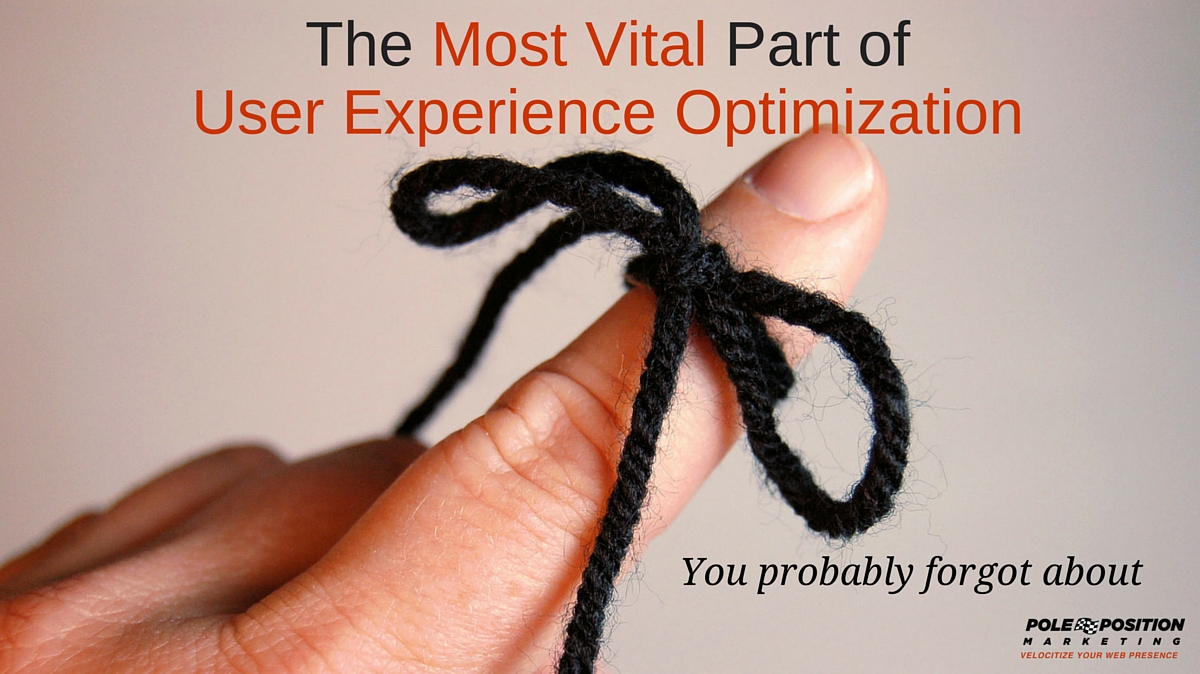
The best optimization is optimization that is done for visitors. [inlinetweet prefix=”” tweeter=”” suffix=”@StoneyD”]There are so many ways to help make the visitor experience remarkable, but one of the most overlooked is content usability.[/inlinetweet]
One of the arguments naysayers often make against web marketing is that SEOs demand crappy and pointless content. Many SEOs still hold onto the belief that there needs to be a certain amount of content (quality or otherwise) on any given web page in order for it to be valuable to search engines. This is outdated thinking.
Don’t worry about the how much content goes on each page; instead focus on the value of the content. Keep what’s valuable and ditch the rest, but keep writing until you’ve have all the content the visitor will need.
If you’re wondering how much content you need to have on a page, you’re thinking about the wrong thing. Instead, think about what the purpose of the page is and ensure that the content fulfills that purpose. If that can be done in 10 words, then 10 words is all you need.
But it’s not just about the amount of content. It’s also how it’s presented.
Content On Demand
One of the great benefits of the emergence of mobile optimization is it has paved the way for the legitimacy of content on demand. What is content on demand? It simply means making some of the content on the page always available while hiding the rest until the visitor asks for it.
There are a couple of places on a site where using content on demand is beneficial.
Product Category Pages
Typically, when visitors lands on your product category pages, they want to see the products right away. In fact, if you have too much visible text above the products, visitors may leave the page without ever realizing that the products are just a short scroll away. But you know that many visitors will want to know certain things about the products that fall within that category.
The solution here is to provide a paragraph or two of the content above the products with the rest of the content hidden until the visitor requests it. Usually a “read more” link that opens up the content is a great way to go.
This provides the best of both solutions. Visitors see products immediately, but the content is available for those who are interested in exploring that further.
Product Pages
Product pages also often require a lot of content, but in different formats. Descriptions, specification, ratings, reviews, etc. are all valid types of content that help visitors make a purchase decision.
But for simplicity sake, you don’t want your visitors to have to scroll though things they don’t care about just to find the things they do. Placing content behind on-demand links or tabs helps visitors stay focused on the aspects of the product they they want to know, while easily ignoring those things that don’t matter.
It’s all about the User Experience
Keep in mind that “hiding” content even legitimately has its drawbacks. Search engines automatically value hidden content lower than visible content. But lower value content is still more valuable than no content. And it’s probably not much less of a devaluation from content you have to scroll to read.
But you have to always do what is best for your visitors. If chunking it into on-demand blocks makes sense, do that. If it’s better to have content that has to be scrolled to get to, then go that route. It’s really all about creating the best user experience possible.
The web is constantly evolving, and the way we write and present content must evolve with it. New technologies create new expectations and give us new opportunities to better meet our audience’s needs. Not only do visitors want to control the process of their site navigation, but you can also give them greater control over their content consumption. Which may be one of the most vital aspects of giving your visitors a great on-site experience.
